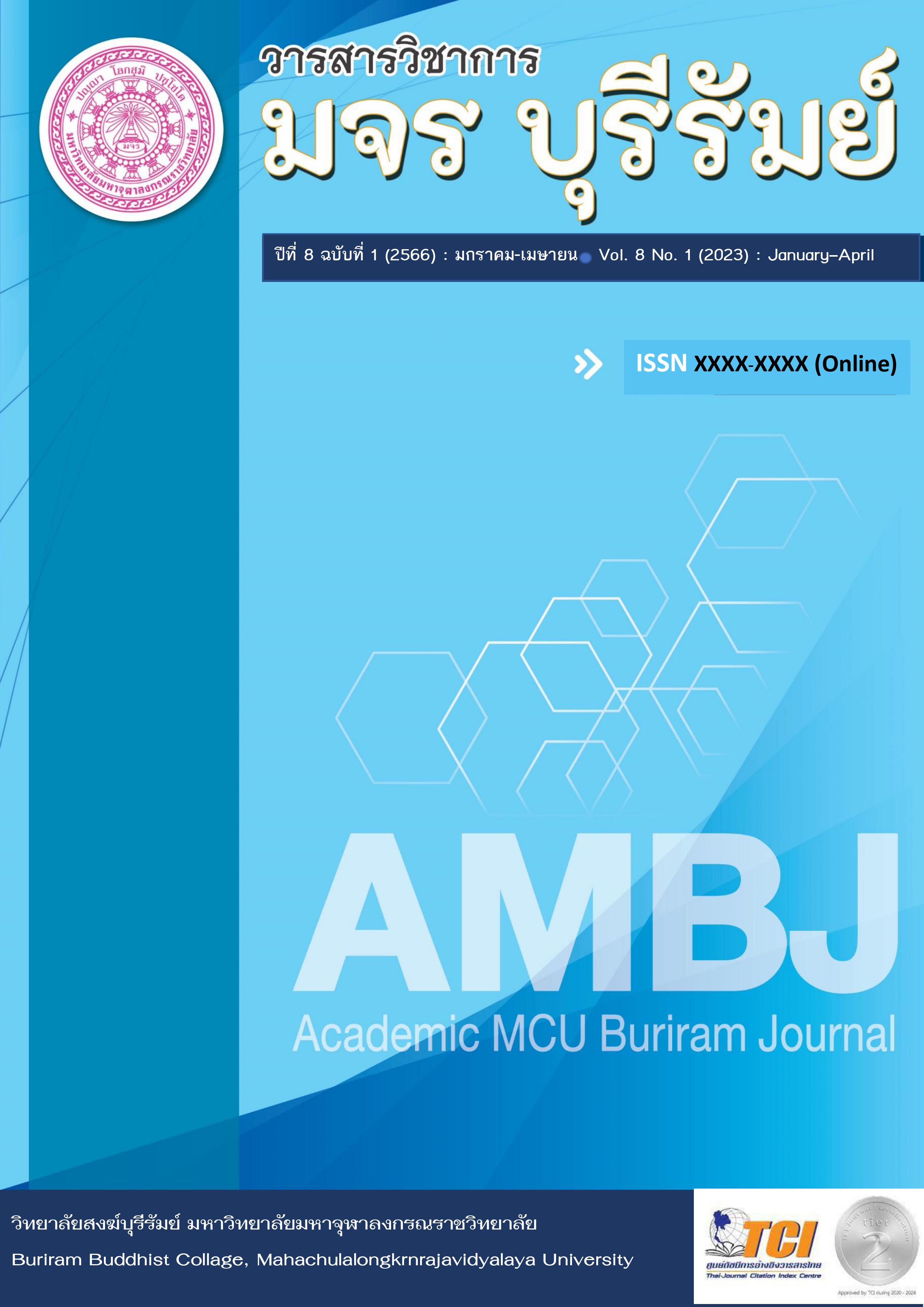An Analytical Study of Ethics in the Middle Path of Theravada Buddhist Philosophy
Keywords:
Analysis, Ethics, Middle Path, Buddhist PhilosophyAbstract
The purpose of this research were: 1) to study the Middle Path in Theravada Buddhist philosophy, 2) to study of ethics in Theravada Buddhist philosophy, and 3) to analyze ethics in the Middle Path of Theravada Buddhist philosophy. This research is used documentary process and presents in descriptive method.
The research results found that:
The Middle Path in Theravada Buddhist philosophy was the middle way. It was very important for living. It was called the middle way to practice for extinguish the root of suffering with wisdom, meaning to live a good life to determine the suffering and problems of suffering or to show way to determine the suffering. Following the Middle Path made knowing (Chakkhu) and wisdom (Nana), there would lead to peace, knowledge, enlightenment, and Nibbana.
Ethics in Theravada Buddhist philosophy referred to science of human behavior. It recognized what should be done and what should not be done and what should be practiced and what should be not practiced. Its aim was to reach the supreme good. There were 3 levels in Buddhist ethics: 1) basic ethics meant five precepts, 2) middle ethics meant 10 wholesome courses of actions (kusala-kammapatha), and 3) the highest ethics meant the Noble Eightfold Path (Atthangika-magga). Buddhist ethics was the practice way for Nibbana.
An Analysis of ethics in the Middle Path of Theravada Buddhist philosophy showed that the Middle Path was main principle for leaving evil and does goodness for attaining the highest goal, Nibbana. The Middle Path can divide into 2 types; 1) the middle Dhamma of practice called Majjhana-Dhamma-desana and 2) the middle way of practice called Majjhima-patipada. Those were the way to eradicate suffering and entering Nibbana.
References
กีรติ บุญเจือ. (2542). จริยศาสตร์. กรุงเทพมหานคร: ไทยวัฒนาพานิช.
บุญมี แท่นแก้ว. (2550). จริยศาสตร์. กรุงเทพมหานคร: โอ เอส พริ้นติ้ง เฮาส์.
มหาจุฬาลงกรณราชวิทยาลัย. (2500). พระไตรปิฎกภาษาบาลี ฉบับมหาจุฬาเตปิฎกํ 2500. กรุงเทพมหานคร: โรงพิมพ์มหาจุฬาลงกรณราชวิทยาลัย.
มหาจุฬาลงกรณราชวิทยาลัย. (2539). พระไตรปิฎกภาษาบาลี ฉบับมหาจุฬาลงกรณราชวิทยาลัย. กรุงเทพมหานคร: โรงพิมพ์มหาจุฬาลงกรณราชวิทยาลัย.
Downloads
Published
How to Cite
Issue
Section
License
Copyright (c) 2023 Academic MCU Buriram Journal

This work is licensed under a Creative Commons Attribution-NonCommercial-NoDerivatives 4.0 International License.
ทัศนะและความคิดเห็นที่ปรากฏในบทความวารสารฉบับนี้ถือเป็นความรับผิดชอบของผู้เขียนบทความนั้น ไม่ถือเป็นทัศนะและความรับผิดชอบของบรรณาธิการ





